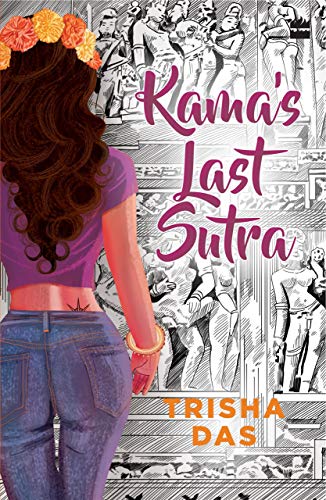Not just entertaining but educative too

Saurabh Tankha
Trisha Das’ Kama’s Last Sutra (Harper Collins, Rs 299, Pages 299) is a feminist fantasy novel that travels across time, foregrounds women’s sexual agency, challenges gender roles, sexual taboos and caste divisions.
Protagonist Tara Singh, an archaeologist, is on an excavation project in the ruins near Khajuraho, hoping to unearth a new temple there when she gets an opportunity to travel back in time thanks to tantric Kala Devi, a time-travelling yogini from over a thousand years back. It is better to let go and leave yourself open to all that comes your way. Hurt may come, but so will the possibility, Kala Devi advises a hesitant Tara. I sincerely feel this advice is meant for all of us and not just her!
Tara travels back to 1022 CE Bundelkhand region when the Kandariya Temple, which she is trying to excavate from under the earth, was built (in Khajuravahaka). There she gets to meet Chandela King, Vidyadhara, who got it made, and experiences firsthand the way the kings and kingdoms functioned. With the king, she travels to Kalinjar where she gets trapped in a medieval world full of his queens, concubines and courtiers. All this while she has just one sword, a huge and unwieldy one that she can barely lift, to defend herself. How she keeps herself safe and then returns to her present-day life is a story worth reading?
And as she scrambles to find her way back, Tara begins to wonder why she was sent here in the first place. Is there some divine purpose?
In her present life, she is secretly drawn to her boss, eminent archaeologist Hari Varma, but would rather not talk about it. It is only after she has time-travelled to centuries back that she gets courageous enough to propose him. So, what exactly happened when she was back in the history? Grab the book to know that!
A heady cocktail of romance and history, Kama’s Last Sutra is a lucid commentary on the age-old caste system that sadly still exists in our society and challenges the ever-so-present sexual taboos through its various characters. In the same vein it brings up issues of Sati Pratha, polygamy and devdasis as well. Through the wonderment Tara feels seeing the lush green flora and fauna of Bundelkhand region, the author has also tried to talk about the depleting greens in the 21st century.
The elements of history and mythology are liberally thrown throughout the book and the most interesting part is all the history, mythology, anthropology, religion, sociology and archaeology that’s talked about here is based on facts. So, through its various strong, sassy and vocal characters, the book not just entertains but also educates.
Only one observation: Kama’s Last Sutra is overtly sexy. The author openly talks about female sexuality, pens detailed scenes about foreplay and love-making where she is painfully seems to be a Mills & Boon author!

